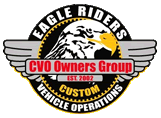Correct cam selection is the single most difficult choice facing the performance enthusiast. And, unfortunately, we get it wrong about as often as we get it right. An incorrect cam choice can result in decreased real-world performance if the selected cam's operating range is not matched to riding style.
The operating range of any Harley engine is determined by a number of factors and the cam design is one of the most influential. If the cam design is not matched to the other components and is not matched to the desired engine power band (rpm range), then the engine's performance will be disappointing. No amount of carburetor tuning can compensate for having the wrong cam.
To get the "right" cam design, you need to do two things: First, decide upon the rpm range you want to improve. Secondly, use the list provided below and cam catalogues to select a cam design that begins to work at the lower rpm of the power range you have chosen. You'll probably be surprised to learn how few of the available cam designs fit your expectations. However, the list is accurate and if you follow its implied advice, you will get an engine that performs as you wish it to.
Cam timing: what matters
The most important cam timing event is the intake valve closing angle. The intake closing point determines the minimum rpm at which the engine begins to do its best work. The later the intake valves close, the higher the rpm must be before the engine gets "on the cam."
Long duration, late closing cam designs are necessary to drag the last bit of power out of an engine. Unfortunately, these same cams can perform poorly under more normal riding conditions. In the quest for maximum power output, many-too-many Harley owners choose a late closing, high-rpm cam for their engine. The problem with such choices is that the engine seldom spends time in the rpm range favored by such cams.
The majority of virtually any Harley motor's life is spent in the mid-portion of its rpm limits, between 2000 and 4000 rpm. At open-road cruising speeds, that range is more like 2500 to 3500 rpm. With current Big Twin gearing, top gear at 2500 rpm returns a road speed of 55 mph and 3500 delivers 84 mph. Riders sometimes "putt" around at 2000 or less. Even when accelerating to cruising speed, few of us use more than 4000 - 4500 rpm as a shift point. Very seldom, in day-to-day use, do our engines get near 5000 rpm, let alone 6000.
Even the mildest of Harley-Davidson's aftermarket cams (Evo or Twin Cam) do their best work above 3000 rpm. At 2000, the majority of these cams seldom perform significantly better than stock cam(s).
The rpm at which a Big Twin gets "happy" can be predicted by the closing point (angle) of the intake valves. The angle is expressed as the number of degrees After Bottom Dead Center (ABDC) that the valves reach .053" from being fully seated.
The following list predicts the rpm at which the engine gets "on the cam" based on the closing angle of the intake valves. These relationships are approximate but should hold true to within 200 rpm or so. They also assume that all other tuning factors, exhaust, ignition, etc., are operating correctly.
30 degrees = 2400 rpm
35 degrees = 3000 rpm
40 degrees = 3600 rpm
45 degrees = 4000 rpm
50+ degrees = 4500 rpm
If you have one of the late closing cam designs installed, say one that closes the intake valves later than 40 degrees, then you cannot expect excellent performance at 2000 rpm. No fuel injection/carburetor adjustment, ignition adjustment or exhaust system can change this.
 Author
Topic: selecting cams (Read 15775 times)
Author
Topic: selecting cams (Read 15775 times)

